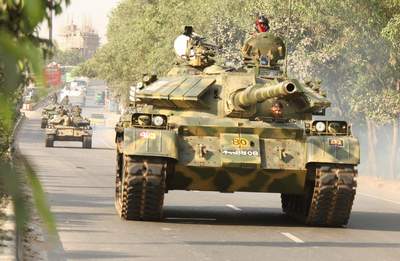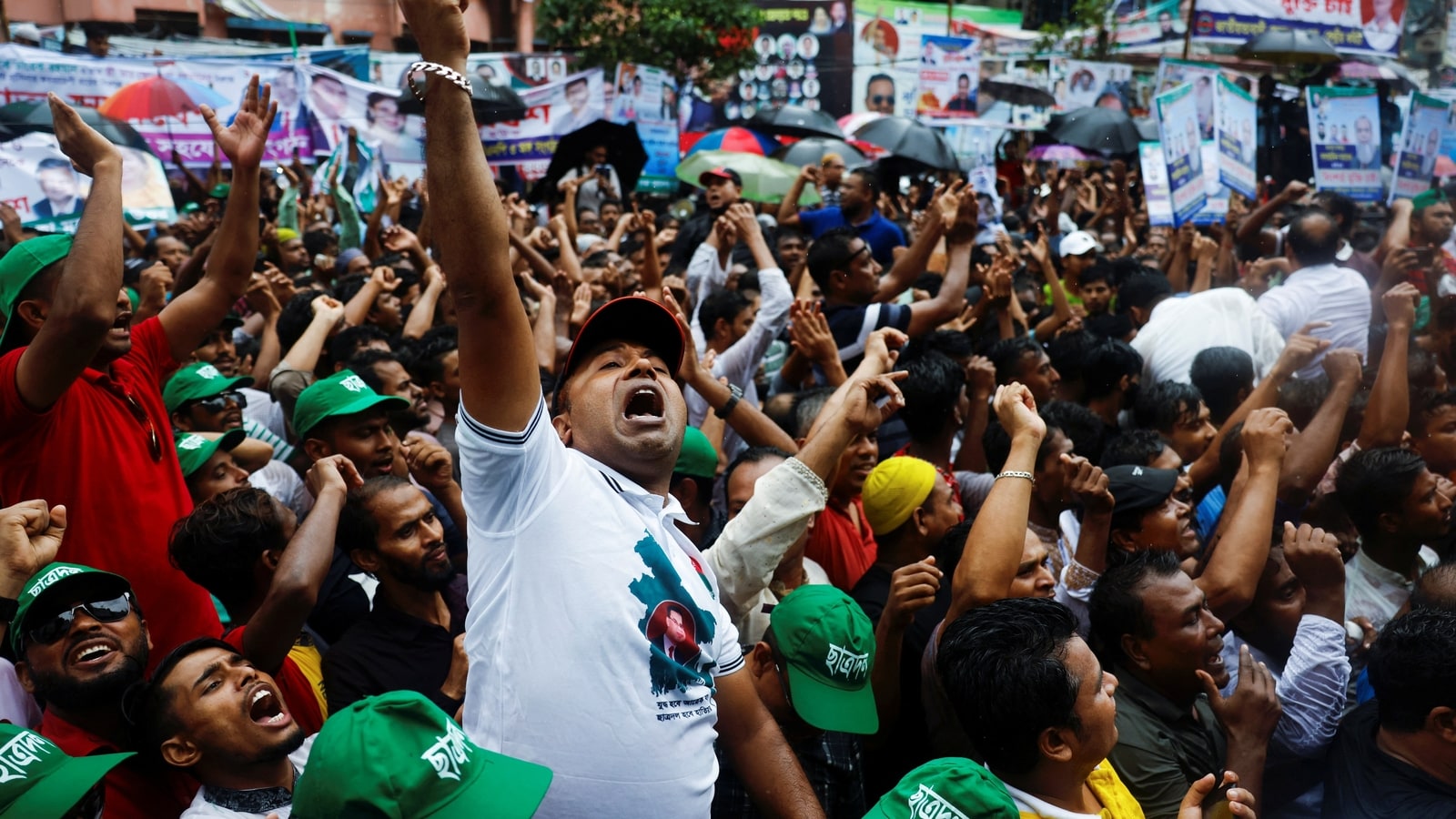Introduction
BDR mutiny was one of the darkest chapter in Bangladesh Armed forces history.
On 25 and 26 February 2009, soldiers of the Bangladesh Rifles (BDR), a paramilitary force entrusted with the responsibility of guarding Bangladesh’s land borders mutinied. What initially appeared to be a few disgruntled soldiers taking up arms for better financial and working conditions, soon turned out to be a calculated massacre. Fifty-nine officers of the Bangladesh Army, who were on secondment to the BDR, and some BDR personnel, were killed over a span of thirty six hours. These officers constituted the entire command structure of the BDR. The murder of such a large number of senior army officers at the hands of the BDR members left the entire nation stunned in horror and disbelief those days.
And the tragedy has left an indelible mark on the country's phsyce.
The way the 2 days insidious revolt was handle by the civilian government is still a topic of great debate to this today.
From the early hours of 25th February Bangladesh army stood ready for armed raid of the BDR Rifles compound. Army deployed armoured and mechanized element on the street of dhaka and surrounded the BDR headquarter. Similarly commando units were also put on high readiness.
However, Civilian Government of Sheikh hassina restrained from military operation on the BDR compound.
Hence, Supreme command of the army declined to give 'go to' order.
While pressure from the junior army officers and field commanders were mounting on the army Supreme command and the civilian government to give green signal for commando raid on the rebel compound as each hour passed by, ultimately the The mutiny ended as the mutineers surrendered their arms and released the hostages after a series of discussions and negotiations with the government.

 en.wikipedia.org
en.wikipedia.org
By some it was always considered a mystery why army supreme command did not allow the commando raid on the BDR headquarter, which at the time seemed to be the most logical choice to reduce hostage casualties and restore authority and control as fast as possible.
Also, it seemed very surprising how government despite immense pressure from the army, stood by its decision not to allow immediate operation on the compound.
Interestingly, over the years some political commentators and analysts strongly alleged India's involvement in 2009 incident.
But there never was any direct acknowledgement or admission on such accusations from any of Indian stablishments.
The shocking revelation
However, recently a respected Indian journalist (Avinash Paliwal, an Associate Professor of International Relations at SOAS University of London, specialises in foreign and security policy analysis with regional focus on South Asia) writing for the country's leading media outlet 'Hindustan times', for the first time directly admitted that, (or to be more precise, almost bragged about how) India has threatened direct military intervention in Bangladesh during BDR mutiny.
As he writes in his article named 'Poll-bound Bangladesh is at an inflection point'
"But there’s one last aspect critical to it all i.e., India’s response. Something not widely known in Bangladesh is that the army was forced into the barracks under Indian pressure. In 2009, when former chief General Moeen Uddin Ahmed was being pressed by his officer corps to give shooting orders to quell the Bangladesh Rifles mutiny, India threatened military intervention if he did so. New Delhi worried about Hasina’s safety, and was unsure of Moeen’s Napoleonic ambitions. It was not a bluff."

 www.hindustantimes.com
www.hindustantimes.com
@Isa Khan @F-6 enthusiast @PutinBro @Nilgiri @Ryder et al.
Full article:-

BDR mutiny was one of the darkest chapter in Bangladesh Armed forces history.
On 25 and 26 February 2009, soldiers of the Bangladesh Rifles (BDR), a paramilitary force entrusted with the responsibility of guarding Bangladesh’s land borders mutinied. What initially appeared to be a few disgruntled soldiers taking up arms for better financial and working conditions, soon turned out to be a calculated massacre. Fifty-nine officers of the Bangladesh Army, who were on secondment to the BDR, and some BDR personnel, were killed over a span of thirty six hours. These officers constituted the entire command structure of the BDR. The murder of such a large number of senior army officers at the hands of the BDR members left the entire nation stunned in horror and disbelief those days.
And the tragedy has left an indelible mark on the country's phsyce.
The way the 2 days insidious revolt was handle by the civilian government is still a topic of great debate to this today.
From the early hours of 25th February Bangladesh army stood ready for armed raid of the BDR Rifles compound. Army deployed armoured and mechanized element on the street of dhaka and surrounded the BDR headquarter. Similarly commando units were also put on high readiness.
However, Civilian Government of Sheikh hassina restrained from military operation on the BDR compound.
Hence, Supreme command of the army declined to give 'go to' order.
While pressure from the junior army officers and field commanders were mounting on the army Supreme command and the civilian government to give green signal for commando raid on the rebel compound as each hour passed by, ultimately the The mutiny ended as the mutineers surrendered their arms and released the hostages after a series of discussions and negotiations with the government.

Bangladesh Rifles revolt - Wikipedia
By some it was always considered a mystery why army supreme command did not allow the commando raid on the BDR headquarter, which at the time seemed to be the most logical choice to reduce hostage casualties and restore authority and control as fast as possible.
Also, it seemed very surprising how government despite immense pressure from the army, stood by its decision not to allow immediate operation on the compound.
Interestingly, over the years some political commentators and analysts strongly alleged India's involvement in 2009 incident.
But there never was any direct acknowledgement or admission on such accusations from any of Indian stablishments.
The shocking revelation
However, recently a respected Indian journalist (Avinash Paliwal, an Associate Professor of International Relations at SOAS University of London, specialises in foreign and security policy analysis with regional focus on South Asia) writing for the country's leading media outlet 'Hindustan times', for the first time directly admitted that, (or to be more precise, almost bragged about how) India has threatened direct military intervention in Bangladesh during BDR mutiny.
As he writes in his article named 'Poll-bound Bangladesh is at an inflection point'
"But there’s one last aspect critical to it all i.e., India’s response. Something not widely known in Bangladesh is that the army was forced into the barracks under Indian pressure. In 2009, when former chief General Moeen Uddin Ahmed was being pressed by his officer corps to give shooting orders to quell the Bangladesh Rifles mutiny, India threatened military intervention if he did so. New Delhi worried about Hasina’s safety, and was unsure of Moeen’s Napoleonic ambitions. It was not a bluff."
Poll-bound Bangladesh is at an inflection point
An impasse between the ruling and Opposition parties in Bangladesh risks unrest, and the army might intervene. But it could dislocate the civil-military balance
@Isa Khan @F-6 enthusiast @PutinBro @Nilgiri @Ryder et al.
Full article:-









